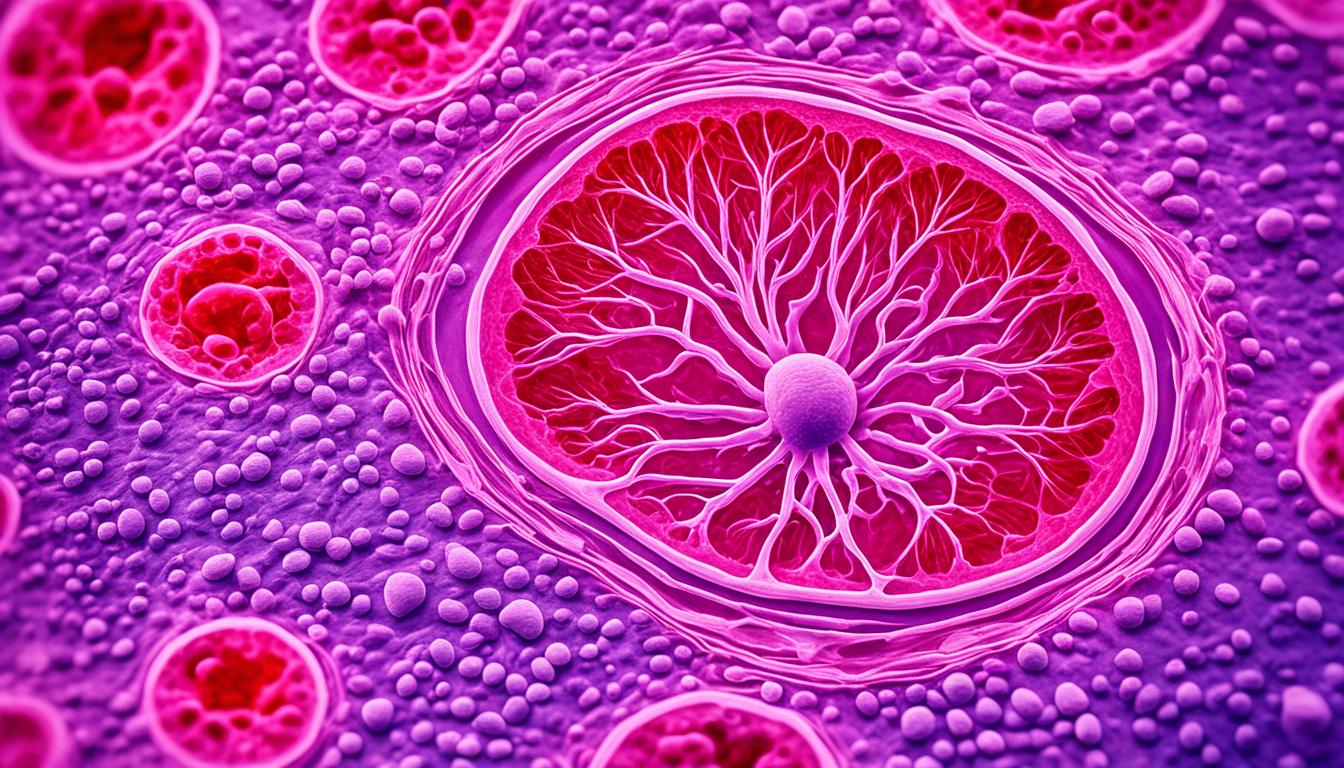Kidney cysts are like balloons filled with fluid. They grow inside the kidneys. This can happen because of age or various diseases, like polycystic kidney disease.
People with kidney cysts might feel pain in their back or lower sides. They could also get headaches. Seeing blood in the urine is another sign. Doctors find kidney cysts with special tests and by looking at your family’s health history.
There’s no cure for kidney cysts, but doctors have ways to help with the symptoms and any issues they may cause. Sometimes, if the kidneys are badly damaged, people might need a new kidney or have to do dialysis. Right now, scientists are studying if stem cell therapy could be a good way to treat kidney cysts.
Key Takeaways:
- Kidney cysts are fluid-filled sacs that can develop in the kidneys.
- Symptoms of kidney cysts may include back and lower side pain, headaches, and blood in the urine.
- Diagnosis of kidney cysts is usually done through imaging tests and family history.
- Treatments can help manage symptoms and complications of kidney cysts, but there is no cure.
- In severe cases of kidney failure, dialysis or kidney transplants may be necessary.
- Stem cell therapy is being explored as a potential treatment option for kidney cysts.
Kidney cysts cause problems, so knowing about them is important. In the next parts, we will look deeper into the symptoms, causes, and how doctors treat kidney cysts. This info will help you understand more about kidney cysts and how they can be managed.
Symptoms and Diagnosis of Kidney Cysts
Kidney cysts often show no symptoms, especially at first. Yet, as they increase in size, you might start to feel some signs. This includes pain in the back and lower sides, headaches, and blood in the urine. If you notice these, it’s wise to see a doctor for checkup.
Doctors use tests like ultrasound, CT, or MRI to spot kidney cysts. These tests let them see detailed pictures to confirm the cysts and check their size and place. They also perform a physical exam and delve into your medical history.
Sometimes, a family history of kidney cysts or conditions like PKD matter. Genetic tests might also help figure out the risk of having kidney cysts.
Common Symptoms of Kidney Cysts
- Pain in the back and lower sides
- Headaches
- Blood in the urine
If any of these symptoms worry you, talking to a healthcare professional is key. They can offer the right tests and advice.
Finding kidney cysts early is essential. This allows for timely treatment. It’s also important to keep up with check-ups, especially if cysts run in your family or are linked to your genetics.
Causes and Risk Factors of Kidney Cysts
The exact cause of kidney cysts is often unclear. But, several things can lead to their formation. These include aging, certain genetic conditions like PKD, and family history of kidney cysts or PKD.
Chronic kidney disease and kidney dialysis also increase the risk. Among these factors, aging is the most common. Males are more likely to get kidney cysts than females. If you have high blood pressure, your risk also goes up, as does smoking.
Knowing these causes and risks helps healthcare pros and people prevent kidney cysts. It’s key to remember that some risks can be changed, like smoking. But others, like genetic problems, cannot.
Prevention and Management of Kidney Cysts
While not always preventable, lifestyle changes and treatments can manage kidney cysts. If you have chronic kidney disease, following your treatment plan is important. This can lower your risk.
Quitting smoking is a big step in keeping your kidneys healthy. It also helps to control your blood pressure. For those with a family history, regular kidney check-ups are advised. This can catch cysts early.
Eating well, being active, and keeping a healthy weight are important. If you’re worried or have a family history of kidney cysts, see a nephrologist. They can offer advice and keep an eye on your kidney health.
By understanding the causes, risks, and taking steps to prevent kidney cysts, you can safeguard your kidneys.
Stem Cell Therapy for Kidney Cysts
Stem cell therapy could be amazing for treating kidney cysts in the future. Stem cells can change into different types of cells, including those found in the kidney. This means they might help repair damaged kidney tissue. Scientists want to see if using stem cells this way can help kidney cysts.
The aim of this therapy is to swap out the bad tissue with good, working tissue. If successful, it could make kidneys work better and lower problems caused by cysts. Using the power of stem cell’s regrowth, this treatment brings hope to people with kidney cysts.
This method is still being tested. More studies and tests are needed to be sure it’s safe and works well. But, it could change the way we treat kidney cysts. It offers new hope for those struggling with this health issue.

